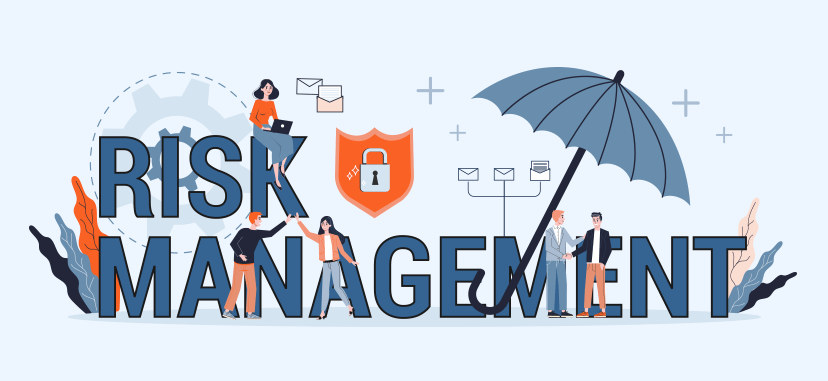
Click the button to start reading
Issues vs Risks in Project Management: A Breakdown and Analysis
Every project manager knows that “things” are going to happen, regardless.
A project consists of many moving parts. It’s about building something new, or establishing a new process, and operates within the constraints of time, money, and resources. Plus, it requires coordinating a checkerboard of activities.
And so snafus, unforeseen occurrences, problems, issues, and even disasters are bound to occur.
From time to time, this may feel discouraging to project managers. It’s as though their job is about facing inevitable storms head on, day-in and day-out.
Wouldn’t it be lovely, rather, to breeze through issues and storm clouds at a nice clip, with the wind at your back?
Believe it or not, there is a way. It’s all about taking the right approach to risks and issues.
Want to understand how? In this post, we’re taking a careful look at risks and issues, and exploring how managing both is key to navigating all of a project’s moving parts with ease.

What’s the Difference Between a Risk and an Issue?
Risks and issues sound almost like the same thing. While in fact, they differ significantly. Let’s define each term, then look at some examples.
Risk: A Definition
A risk is an event that hasn’t taken place.
The standard project management definition says: “A risk is the probability of occurrence of a specific event that affects the pursuit of objectives. Risks are not negative by definition. In project management, opportunities are also considered risks.”
With a risk, the specific event may or may not take place. The event’s impact and the probability of it occurring, however, is significant enough that it merits attention. The event would impact the project’s constraints, or the deliverable, either for better or for worse.
Simply put, a risk is uncertainty that matters.
Examples of Risks
Risks vary depending on the nature of the project. Every project faces the risk of losing skilled team members. In a cybersecurity company, viruses pose a serious risk. In construction, inclement weather that stalls a project would significantly impact the timeline.
On the flip side, projects face positive risks as well. These risks might include the development of a new technology that would save the project time and money, or the addition of a skilled expert to assist with creating deliverables.
Issue: A Definition
An issue is a risk that has occurred, which the team is dealing with in the present.
Here is the standard project management definition for issue: “Anything that can cause problems for a project. The term typically refers to major problems that cannot be tackled by the project team on their own.”
Issues are exclusively a manifestation of negative risks. In order to resolve or mitigate issues, they require immediate action.
Simply put, issues are certainties that matter.
Examples of Issues
Issues vary depending on the project. Every project may face the issue of employees quitting during the project’s execution. An issue faced by a cybersecurity company may be a virus attacking one of its servers. An issue faced by a construction project might be the delay of materials that forces a project to stop mid-track.
Similarities and Differences Between Issues and Risks
Both risks and issues impact the timeline, cost, scope and quality of a project. Their significance depends on how they impact a project’s constraints.
However, issues have already occurred, and risks may or may not occur. Additionally, issues always impact the project negatively, while risks may impact the project both negatively and positively.

How to Mitigate Issues with a Risk Management Plan
Every project faces issues, as discussed. Anticipating issues lessens their severity and may even avert some altogether. This “anticipation” is known as a risk management plan.
A risk management plan requires buy-in. To many project managers, it doesn’t make sense to spend time planning for events that may not occur. They’d just as soon deal with each issue as it transpires. Once a project manager appreciates that anticipating issues ultimately saves time, money and resources, they are ready to create a risk management plan.
A risk management plan analyzes a project at the onset, and anticipates all possible occurrences, both positive and negative. The plan also considers the likelihood of each occurrence. For example, a winter construction project would anticipate inclement weather, and place a high probability on this occurrence.
Here are a few components of a comprehensive risk management plan.
Know Your Environment
A project’s risks are determined by its environment. And so identifying all of a project’s assets, stakeholders, deliverables and constraints is the first step in a risk management plan.
This stage is about answering the question: “What stands to be lost here?” and then identifying the threats and vulnerabilities of each asset.
Measure Your Risk Appetite
An organization also looks to its culture and mission statement to determine how to handle risk. Depending on its level of tolerance, some companies take on a lot of risk, while others choose to transfer risk elsewhere.
Put a Plan in Place
When the vulnerabilities and threats for each asset have been identified, the next step is to determine how to handle them. Risks can either be avoided, transferred, accepted, or mitigated.
Avoiding risks means you eliminate any chance of facing the risk altogether. This is rarely a feasible solution for most projects. For example, in cybersecurity, disconnecting from the internet would avoid key risks, but it would also preclude daily business operations.
Transferring means moving the risk to another organization or company. For example, a company might transfer the risk of theft to a security company.
Accepting is when the organization faces the risk head-on. When a company has the capability, this is an ideal way to handle a risk.
Mitigating risk is a process of decreasing the severity of an occurrence. A company might mitigate the risk of exceeding the budget by setting aside a portion for unexpected expenses.
Run Mock Issues
For any risk the organization accepts, running a mock issue ensures that everything is in place, should the event transpire.
A mock issue is essentially a dry run or a fire drill. For example, a cybersecurity company might run a recovery plan for the disaster of losing all company data. The drill in this instance would involve moving everything over to another data center.
Although running mock issues isn’t feasible in every scenario, it’s a helpful exercise whenever possible.
These are some key areas to cover with a risk management plan. Carefully considering all anticipated risks means the project is more likely to stay within its constraints when the issues occur.

How to Manage Issues
A risk management plan ensures you have a proactive and not reactive approach to issues when they surface. It’s about developing a process for handling these issues. Rather than playing a game of whack-a-mole to resolve them, this plan ensures issues are prioritized and then managed effectively.
Here is what to include in an issue management plan:
- A Problem Statement: A problem statement puts an issue or problem into writing. This serves to focus and direct the group’s energy toward solving it.
- An Impact Assessment: An impact assessment considers the significance of issues, and how they affect the project’s overall objective. This is a key step toward prioritizing issues.
- A Log: Recording issues into a log helps determine which issues to handle, and in what order.
In sum, risk and issue management plans, taken together, create a strong shield against all the risks and issues a project faces.
Conclusion
One attribute of a stand-out project manager is that he or she embodies Murphy’s Law. By adapting the mindset that if “anything can go wrong, it will,” the project manager is on the lookout for any and all issues.
Although snafus are sure to occur, risk and issue management ensures they’re resolved efficiently, allowing the team to instead focus its energy on achieving the project’s objective.
Communication is central to resolving issues effectively. Are you managing a remote team? Be sure to visit Teamly. Our work boards and task lists make communication throughout a project a cinch. Visit us and sign up for a free account today!
















